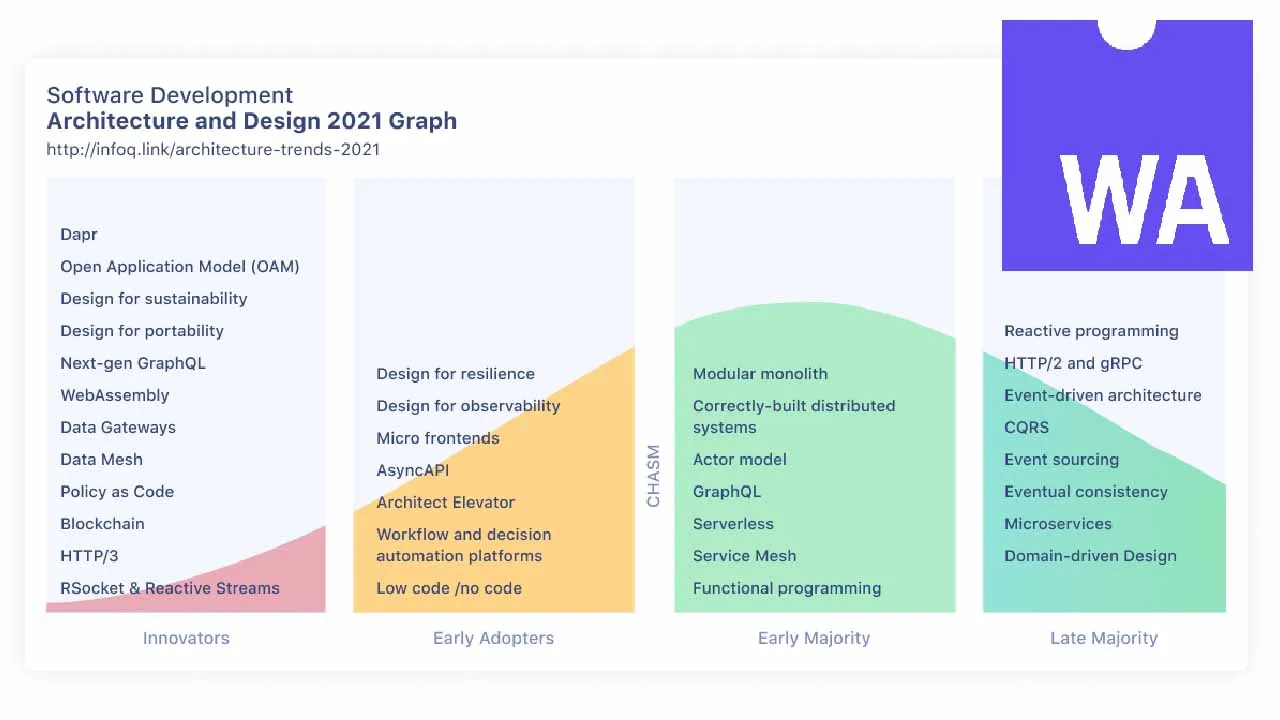- In a cloud-native world, architects are reprioritizing the -ilities they consider most important. Innovative architects are designing for resilience, observability, portability, and sustainability.
- Dapr and the Open Application Model are two ways to make building distributed systems easier, and it will be interesting to watch how they are adopted in the future.
- The pendulum seems to be coming to rest, after swinging to extremes between monoliths and microservices. As a result, architects are relying on well-established patterns and designs that focus on high cohesion and low coupling, regardless of the underlying technology.
- In fully-remote work environments, architects are finding new ways to communicate with their teams, and finding replacements for the water cooler chats which were useful for gathering knowledge.
- The next generation of GraphQL features, notably GraphQL Federation and GraphQL Microservices, are showing where to go next after companies have strong adoption of GraphQL.
Each year, the InfoQ editors discuss the current state of software architecture and design, and identify the key trends to watch, resulting in this report and the accompanying graph. This year, we’re letting you listen in to the discussion, on an episode of the InfoQ podcast. The editors were joined by Holly Cummins, an innovation leader on IBM’s corporate strategy team, and a previous speaker at QCon.
Designing for ___
We start by looking at which “-ilities” are most important to architects. A software architect is responsible for the cross-cutting concerns and making sure that individual components of a large system can work together seamlessly to meet overall objectives. In 2021, four areas we feel architects are concerned with are designing for resilience, designing for observability, designing for portability, and designing for sustainability.
#dapr #data mesh #reliability #resilience #webassembly
